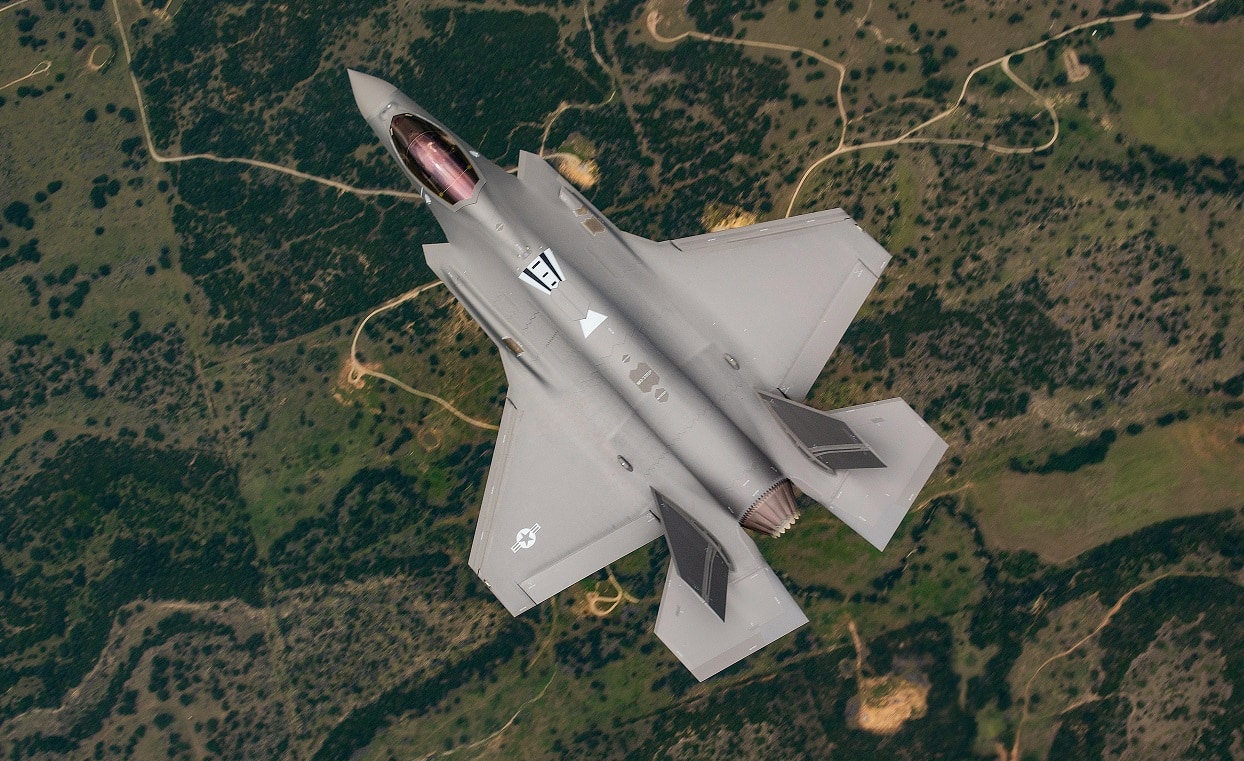Will the U.S. go to war with China to defend Taiwan? Despite the recent, three-hour virtual summit between President Joe Biden and China’s Xi Jinping effort to reduce tensions, the risk is apparent. China is rattling its sword, menacing Taiwan by repeatedly launching dozens of fighter jets toward the island while threatening the U.S. by conducting nuclear-capable hypersonic missile testing.
Although President Biden committed us to defend Taiwan from attack and the 1979 Taiwan Relations Act provides for arms sales, the island republic is still flying F-16s, a 1970s-era fighter jet. Rather than sell Taiwan modern F-35 fighters, the House of Representatives version of the National Defense Authorization Act (NDAA) for 2022 is dithering in the weeds with the Air Force to force an engine swap at great cost to taxpayers.
The fifth-generation F-35 – stealthy, fast and well-armed – is the world’s best fighter aircraft. Its engine is a key reason why.
Evolved from Pratt & Whitney’s F119 engine that powers the F-22 Raptor, the F-35’s F135 engine has more thrust than the F119 and universal parts for, when funded properly, ease of maintenance, production efficiency and economy of scale. When matched to the F-35, it becomes the most formidable propulsion system in military history. At least until the next better, faster, stronger comes along.
Experts tell us that it won’t be long from now – about a decade – when new U.S. airframe and cockpit technology will be ready for improved thrust and all-around capability.
Moreover, considering green energy advocacy, Congress wants that engine to offer greater fuel efficiency. Fine. What makes no sense, however, is developing a completely new system by 2027, specifically to replace the F135 in the Air Force F-35 variant. Such a replacement won’t work on the Marine variant, which needs short takeoff and vertical landing (STOVL) capability and would be too costly to integrate into the Navy version for use aboard aircraft carriers. And forget about more than a dozen U.S. allies and security partners already flying or procuring the F-35 (sorry Turkey) – including South Korea, Japan, Singapore and Australia.
This misguided effort by some in the Biden Administration and Congress to orchestrate an engine replacement mid-program, but only for the Air Force, and only for F-35s produced forward of 2027, will slow down overall F-35 deployment. Separate logistics and maintenance chains will crush efficiency.
I saw this scenario unfold before while serving at the then-largest F-16 air wing in the world.
In 1990, the last of four fighter squadrons at MacDill Air Force Base, Florida, finished converting from earlier A/B models to the more avionics-advanced C/D models. Despite the aircraft upgrade, the receiving squadron was still outfitted with older block 25 C/D models, featuring the Pratt & Whitney F100-PW-200 engine, compared to sister squadrons outfitted with block 30 planes, which used the General Electric F110-GE-100 engine. The result of this mish-mash of airframe models and engines caused supply chain headaches, a bloated logistical budget, and a negative impact on the wing’s mission capable rate.
Similar problems are predictable if forced to mix and match F-35s with the current Pratt & Whitney engine and a separate engine from General Electric, being developed through the Adaptive Engine Transition Program (AETP). The diversion to a “start-from-scratch” engine effort is a rushed and unnecessary waste of taxpayer dollars that will require an entirely new supply chain and wreak havoc on F-35 production.
Lt. Gen. David Nahom, the Air Force’s deputy chief of staff for plans and programs, told the House Armed Services Committee this summer, “We’re going to struggle in the Air Force to bring this to any kind of operational capability.” He explained his hesitation, saying, “We’ve got significant investment to get to this technology, but there’s another significant investment needed to integrate this into the F-35. And right now, given the current topline we have, we’re going to struggle to get any further with this technology.”
In 2011, Congress faced a similar proposal to replace the Air Force’s F-35 engine and agreed against funding. It was a poor idea then and is a poorer idea now that production lines have already been in full swing for 10 years. Pratt & Whitney has presented a plan to efficiently enhance the current engine without upsetting production, and now that makes sense.
The most responsible action is to focus on rapidly fielding this fighter – in countries like Taiwan that need it now – while embarking on parallel but wholly separate efforts to develop engines specifically matched to future aircraft—not mixing and matching existing aircraft frames to new engine systems starting half-a-decade from now.
Like World War II hero General George S. Patton once famously remarked, “A good plan violently executed now is better than a perfect plan executed next week.” Indeed.
Mike Paoli is a former air station commander and chief of the Air Force press desk at the Pentagon. He studied national security issues at the Air War College and served at combat wings in Europe and Southeast Asia.

